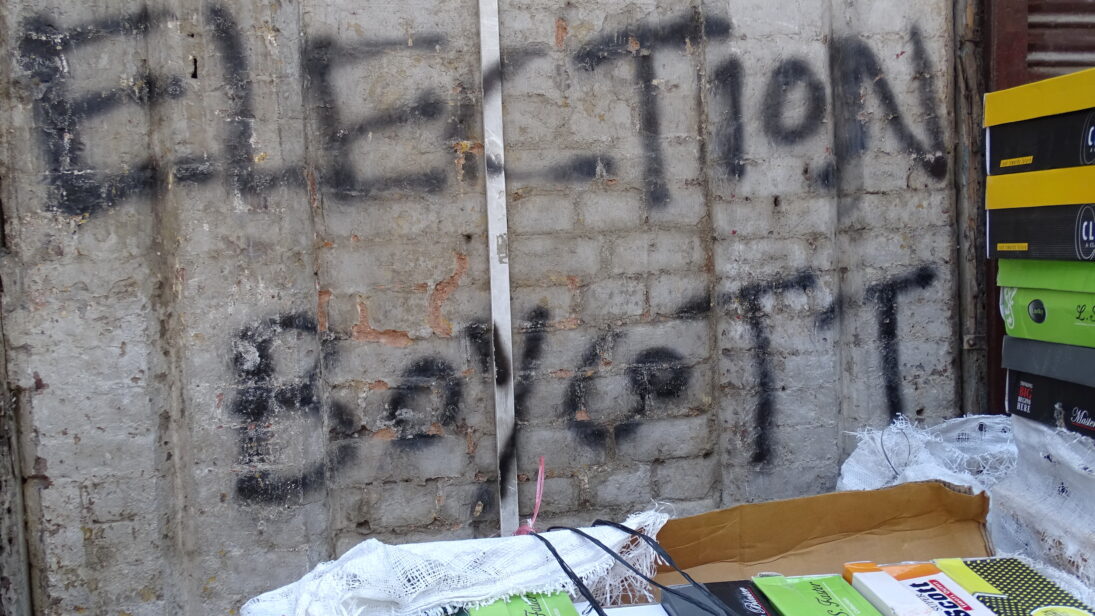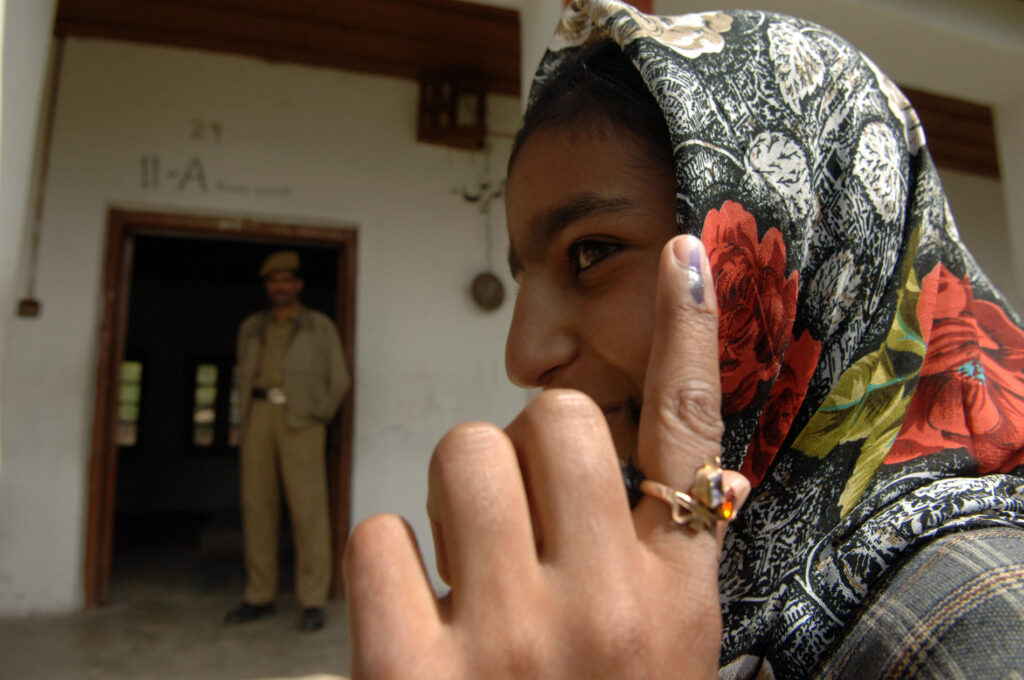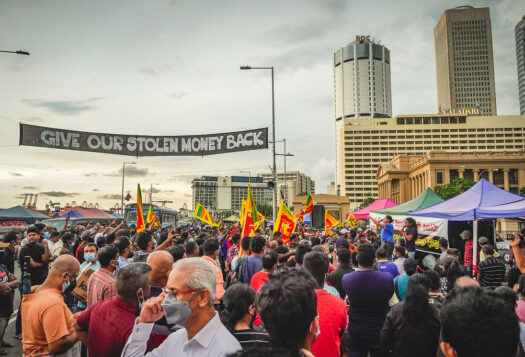
Elections are looming in Indian-administered Jammu and Kashmir (J&K). Panchayat (village council) and municipality elections are due next year, while the Indian general election is to take place in April-May 2024. But the J&K Legislative Assembly, the highest echelon of administrative power in the region, remains dissolved since 2018. Consistent and vociferous demands by regional parties to hold Assembly elections have been met with vague promises from the central government. India’s Chief Election Commissioner Rajiv Kumar said in a recent press conference that assembly elections will be held “at the right time.”
For better or worse, the abrogation of Article 370 – which ended the special autonomous status of J&K and demoted it to centrally-controlled Union Territory – in August 2019 has radically transformed J&K’s political landscape. And for now, the discourse of development has taken precedence over agitational and aspirational politics of self-determination and self-rule. The entry of a new crop of youthful aspirants into the electoral fray, who are poised to compete with established old generation legislators for coveted Member of Legislative Assembly (MLA) seats, signal winds of change in the Valley. These developments lend legitimacy to the democratic process, which was earlier largely rejected by the region’s youth. These emergent trends are sure to have a dramatic impact on the forthcoming legislative elections, whenever they are held.
Before and After Article 370’s Abrogation
For a long time, the separatist movement, which enjoyed considerable public support in the Kashmir Valley, projected elections as a futile exercise that perpetuates an unacceptable status quo, while the local elected legislators contended that they fight elections to address everyday civic concerns. They would insist that their participation in elections does not influence the broader Kashmir issue, which must be dealt with by the governments of India and Pakistan, although New Delhi has often used high voter turnout to declare victory over separatists. However, in the last five years, J&K has witnessed increased youth participation in electoral politics, a trend that seems to have gained wider social acceptance.
Through sustained and coordinated military and police campaigns, Indian counterinsurgency has effectively managed to contain armed militancy, as evidenced by the declining number of conflict-related incidents over the last three years. Simultaneously, the central government, by curbing political rights and civil liberties, as well as suppressing independent media and civil society, has achieved dominance in the region. This iron-fisted policy has left the separatist movement totally incapacitated. With the death of its most influential leader and the major opponent in elections, Syed Ali Geelani, in September 2021, the movement has gone underground. In this altered political scenario, separatist politics – including election boycott campaigning – and any kind of anti-India rhetoric receives immediate punishment under the Unlawful Activities Prevention Act (UAPA) and Public Safety Act (PSA), whereas pro-India or unionist activists receive state patronage.
In the last five years, J&K has witnessed increased youth participation in electoral politics, a trend that seems to have gained wider social acceptance.
A Window of Opportunity
The post-Article 370 political landscape shifted political discourse within Kashmir from one of self-rule to development. While this shift is a matter of political expediency for local leaders in the context of the restrictive political environment, it has also opened a window of opportunity for many emerging young Kashmiri leaders. These aspirants are tactically aligning with the BJP’s vision of a “New Kashmir,” supporting the Article 370 repeal, and calling out the old mainstream parties for their dynastic and opportunistic legacy.
Following the abrogation, the Indian government detained several regional political leaders and kept the Assembly dissolved, creating a political vacuum in the Valley. Additionally, the BJP’s post-370 narrative sought to discredit the People’s Democratic Party (PDP) and the National Conference (NC) as dynastic parties responsible for the region’s problems, further creating a chasm between existing political leaders (particularly ex-MLAs from PDP and NC) and the central bureaucracy, contributing to the rise of new youth leaders.
One such aspirant is 32-year-old Mir Junaid from northern Kashmir, who launched the Jammu and Kashmir Workers Party in the post-370 political vacuum. Many such young politicians appear to have state patronage, suggesting that their entry into the political arena serves a strategic purpose for the Indian government – to reshape Kashmir’s mainstream politics in alignment with the BJP’s policies and to undercut the dominance of the NC and the PDP. Mehbooba Mufti, a former chief minister of J&K, has even accused the central government of orchestrating a conspiracy to establish “a new obsequious political class” that whitewashes the repression of the region.
Mufti’s apprehensions are not without basis. Electoral interference and political manipulation in J&K have a long history. But whatever may be the central government’s larger game plan, youth aspirants have shown a notable presence in the last five years and their influence is likely to keep growing.
Young Faces in the Electoral Arena
In the 2018 panchayat elections and the inaugural 2020 District Development Council (DDC) elections, several young candidates successfully ran as independents, triumphing over more established party candidates. Their victories underscored the growing impact of new faces in the electoral process. While regional heavyweights NC and PDP remain favored platforms for the youth, some have aligned themselves with the Jammu and Kashmir People’s Conference (JKPC), a party that has shifted from a separatist stance to embrace unionist politics.

The newly established Jammu and Kashmir Apni Party (JKAP) and Democratic Progressive Azad Party (DPAP) have also proven to be appealing platforms for some of these youthful aspirants. Surprisingly, the BJP has attracted a substantial number of young Kashmiri Muslims to its ranks. Youthful aspirants like Junaid have expressed their readiness to consider potential political partnership with the BJP under specific conditions. The BJP’s support will provide them with a competitive edge in terms of election campaign resources and the ability to sway some of their opponents.
What particularly differentiates youthful aspirants, apart from their ideologies and party affiliations, is their potential role in Kashmir’s evolving political landscape. Oxford-educated Ifra Jan, who joined the NC in 2021 and rose to the provincial spokesperson and media in-charge position within a year, represents a crop of youth leaders whose technology and debating skills are helpful to the parties for political branding and effective communication. On the other hand, aspirants like Junaid, who have more grassroots experience, can mobilize voters and potentially pose a direct electoral challenge to the established legislators.
Looking Ahead at Kashmir’s Political Future
Historically, legislative assemblies have been the domain of seasoned politicians with resources and influence. However, with MLAs largely being side-lined by the central government, local representative bodies have become the last remaining platforms through which political parties can directly engage with grassroots communities, garner voter support, and assert their presence in the region. Local urban bodies like Block Development Councils (BDCs) and DDCs have carved out a distinct space for aspiring young leaders.
Some of the youthful aspirants enjoy backing from the BJP in New Delhi, enabling them to expedite public works and serve constituents by leveraging central government resources and connections.
Regional parties now recognize the crucial role of emerging young leaders who can secure victories in these elections using new skills and a fresh outlook on the Kashmir issue. A prime example is the recent victory of the NC-Congress alliance in the Kargil Hill Development Council elections, where young members like Muhammad Sajjad and Ashiq Ali made significant contributions. Some of the youthful aspirants enjoy backing from the BJP in New Delhi, enabling them to expedite public works and serve constituents by leveraging central government resources and connections.
In constituencies marked by anti-incumbency sentiment, voters are eager to oust previous MLAs, which creates an opportunity for emerging young leaders who have already demonstrated their mettle by working at the grassroots level, either as DDC or BDC members. A potential candidate in this case is youth leader Manzoor Ahmad Ganai from Tral. Serving as a DDC member has enabled him to expand his support base, and he is optimistic about harnessing the anti-incumbency sentiment when he runs for an MLA position in the next Assembly election.
In conclusion, increased youth political participation in J&K has several implications. In policy areas like education and employment, they can offer fresh perspectives based on their immediate experiences, enhancing the development of the region. It will lend legitimacy to electoral politics among the regions’ large youth population, and potentially create a ripple effect, inspiring more young people to join political parties. This may positively influence voter turnout, and by extension, India’s narrative on Kashmir abroad. The expanding political space can serve as a crucial means to channel youth aspirations and grievances into institutional politics and away from the agitational politics that has characterized the region over the past decade. While much will depend on how much power the central government is willing to cede, this new crop of youth leaders may positively influence the nature and tone of center-state interactions.
Editor’s Note: This article is primarily based on fieldwork and interviews conducted by the author in Indian-administered Kashmir between 2017 and 2023.
Also Read: Beyond Borders: Cultivating Optimism in India-Pakistan Ties through Trade
***
Click here to read this article in Urdu.
Image 1: Election Boycott Graffiti in Srinagar via Flickr
Image 2: First-time Voter in Jammu via Flickr


